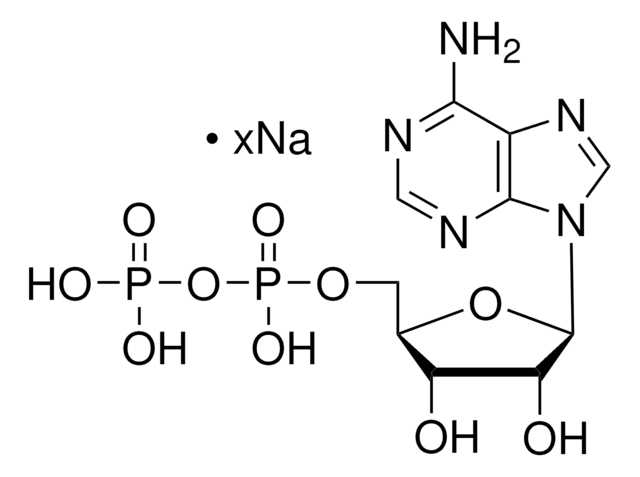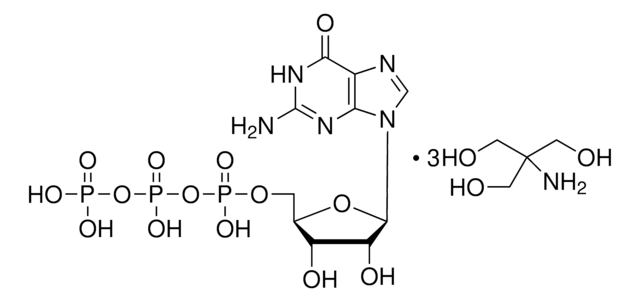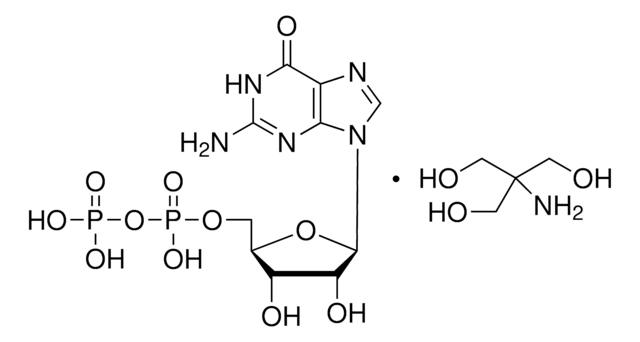G8634
Guanosine 5′-[γ-thio]triphosphate tetralithium salt
≥90% (contains < 10% GDP, HPLC), powder
Sinonimo/i:
GTPγS tetralithium salt, GTP-γ-S-Li4, Guanosine 5′-O-(3-thiotriphosphate) tetralithium salt
About This Item
Prodotti consigliati
Livello qualitativo
Saggio
≥90% (contains < 10% GDP, HPLC)
Stato
powder
Colore
white to off-white
Solubilità
H2O: ≥75 mg/mL (Solutions are very unstable; prepare immediately prior to use.)
Condizioni di spedizione
dry ice
Temperatura di conservazione
−20°C
Stringa SMILE
[Li+].[Li+].[Li+].[Li+].NC1=Nc2c(ncn2[C@@H]3O[C@H](COP([O-])(=O)OP([O-])(=O)OP([O-])([O-])=S)[C@@H](O)[C@H]3O)C(=O)N1
InChI
1S/C10H16N5O13P3S.4Li/c11-10-13-7-4(8(18)14-10)12-2-15(7)9-6(17)5(16)3(26-9)1-25-29(19,20)27-30(21,22)28-31(23,24)32;;;;/h2-3,5-6,9,16-17H,1H2,(H,19,20)(H,21,22)(H2,23,24,32)(H3,11,13,14,18);;;;/q;4*+1/p-4/t3-,5-,6-,9-;;;;/m1..../s1
AMQXJFWJOAWCPV-ZVQJTLEUSA-J
Cerchi prodotti simili? Visita Guida al confronto tra prodotti
Applicazioni
- as a component of lysis buffer
- in oocyte and mammalian cell patch-clamp experiments to keep the G proteins in a constantly active state
- to couple with G- protein α, to study its effect on kinase activity
Azioni biochim/fisiol
Caratteristiche e vantaggi
Codice della classe di stoccaggio
11 - Combustible Solids
Classe di pericolosità dell'acqua (WGK)
WGK 3
Punto d’infiammabilità (°F)
Not applicable
Punto d’infiammabilità (°C)
Not applicable
Dispositivi di protezione individuale
dust mask type N95 (US), Eyeshields, Gloves
Scegli una delle versioni più recenti:
Possiedi già questo prodotto?
I documenti relativi ai prodotti acquistati recentemente sono disponibili nell’Archivio dei documenti.
I clienti hanno visto anche
Il team dei nostri ricercatori vanta grande esperienza in tutte le aree della ricerca quali Life Science, scienza dei materiali, sintesi chimica, cromatografia, discipline analitiche, ecc..
Contatta l'Assistenza Tecnica.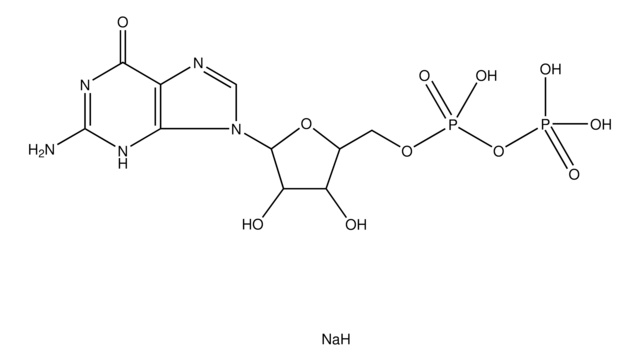
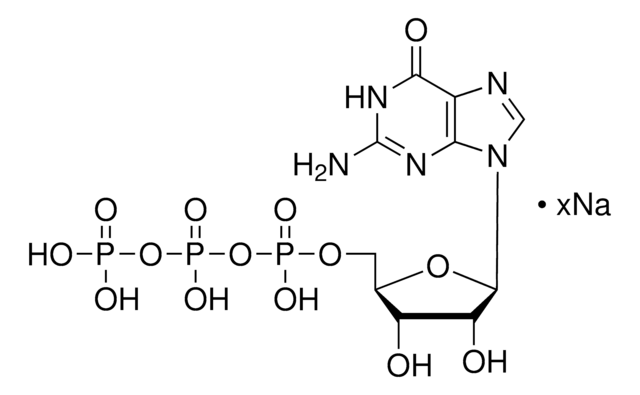
![Guanosine 5′-[β,γ-imido]triphosphate trisodium salt hydrate ≥85% (HPLC), powder](/deepweb/assets/sigmaaldrich/product/structures/204/494/05808804-1ca7-44bf-b6c5-d4934dc7cb85/640/05808804-1ca7-44bf-b6c5-d4934dc7cb85.png)
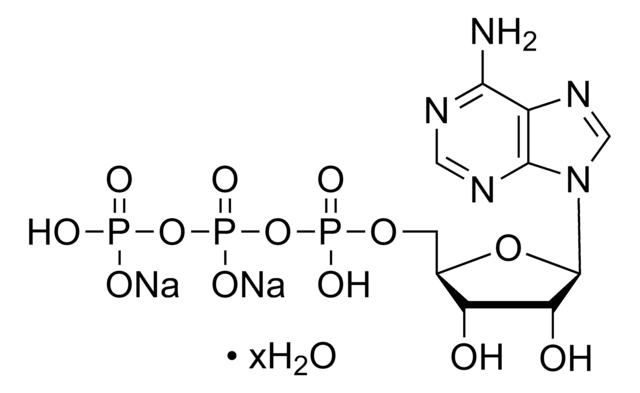


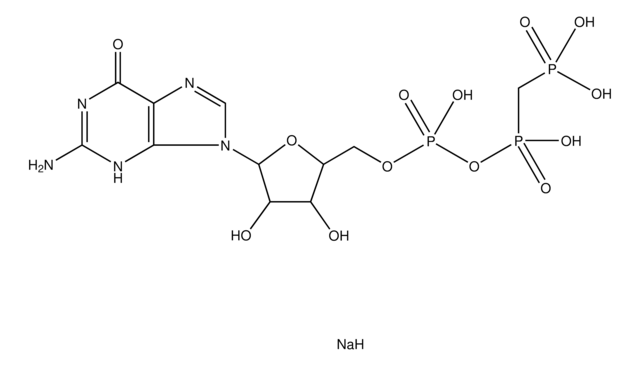
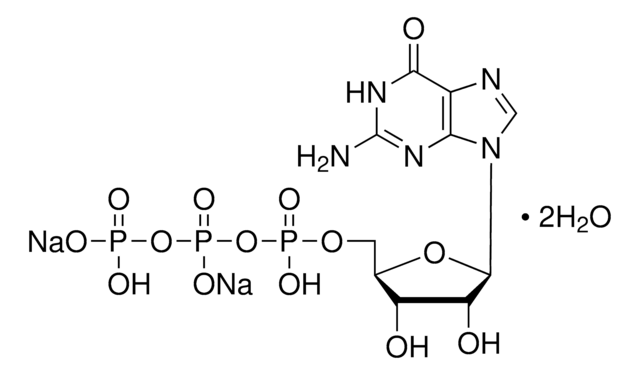
![Guanosine 5′-[β-thio]diphosphate trilithium salt ≥85% (HPLC), powder](/deepweb/assets/sigmaaldrich/product/structures/155/734/9bd8c8c5-4388-4f95-a924-4ff058fa4f41/640/9bd8c8c5-4388-4f95-a924-4ff058fa4f41.png)
